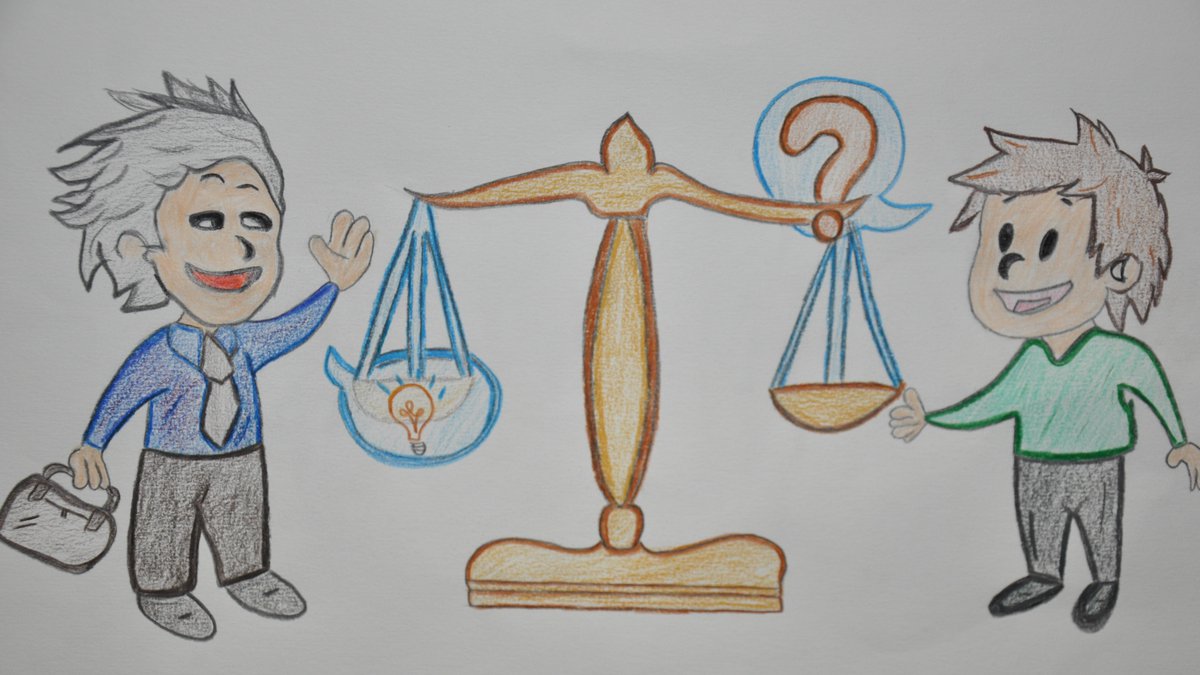
Merging law and art is a common way for cartoonists to engage readers in a social commentary, however, combining the two disciplines is an unusual approach when used in education, particularly in law classes, as they tend to be perceived as static and outdated in their teaching approach.
In her Legal Ethics class, lecturer Jinan Q. asked her students to reflect upon their newly gained knowledge and express their comments through visual representations, primarily drawings.
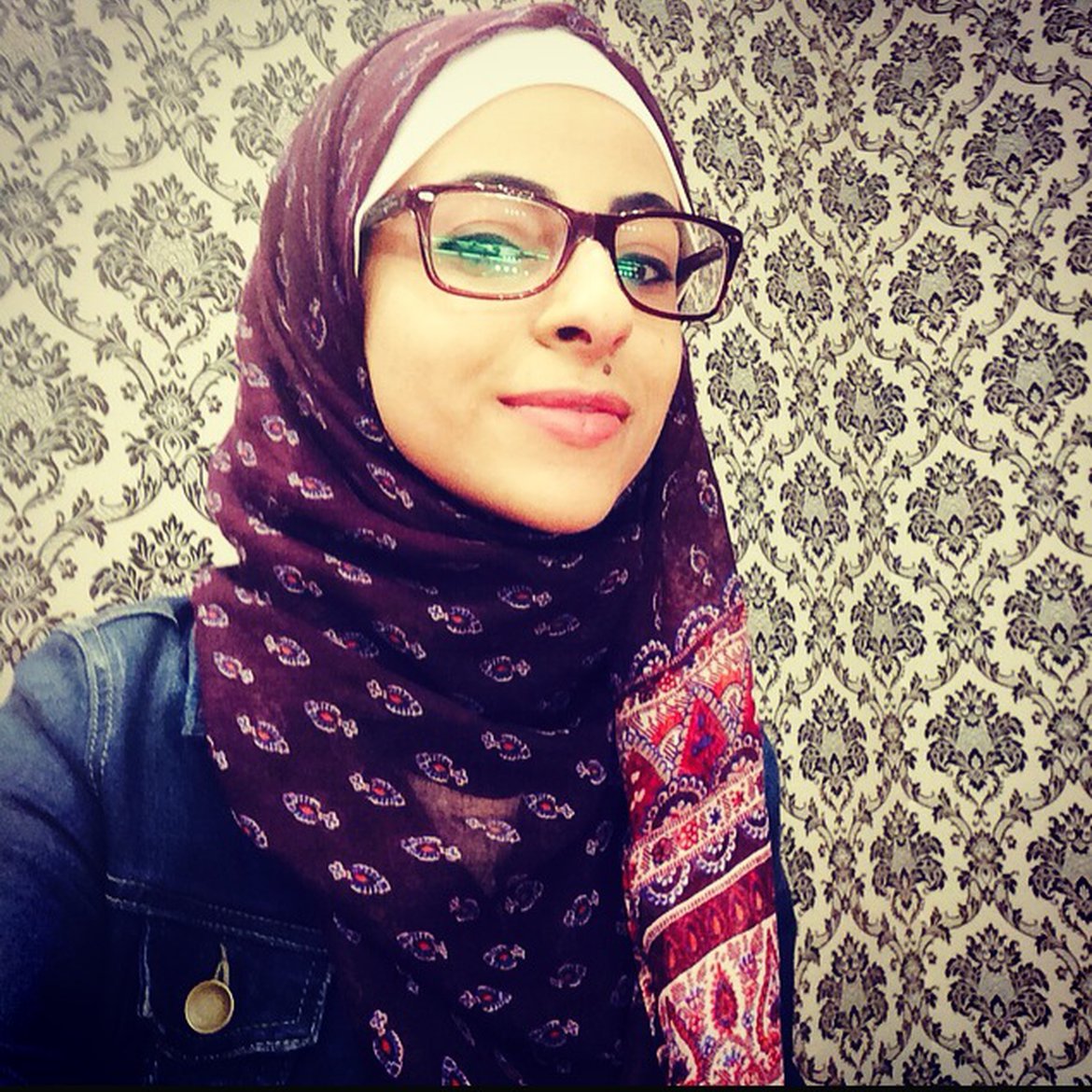
Each student chose a theme, a particular topic upon which to discuss salient issues in the legal sector in Palestine. Students collaborated with their peers from the Faculty of Fine Arts and together, they brought their legal visions to life.
In November 2016, they held a two-day exhibit that took place in the buildings of the Faculty of Law and the Faculty of Fine Arts.
Why did you choose an art exhibit as a way to involve students in your class?
I teach my students that lawyers should be creative and I wanted to set a good model by bringing forth the idea of the art exhibit. I teach my students that lawyers should be creative and I wanted to set a good model by bringing forth the idea of the art exhibit.
I really believe that a revolution should be made in teaching law in Palestine, so I wanted to use the opportunity in my legal ethics class to think outside the box and use the teaching methods that are not typically used when teaching law.
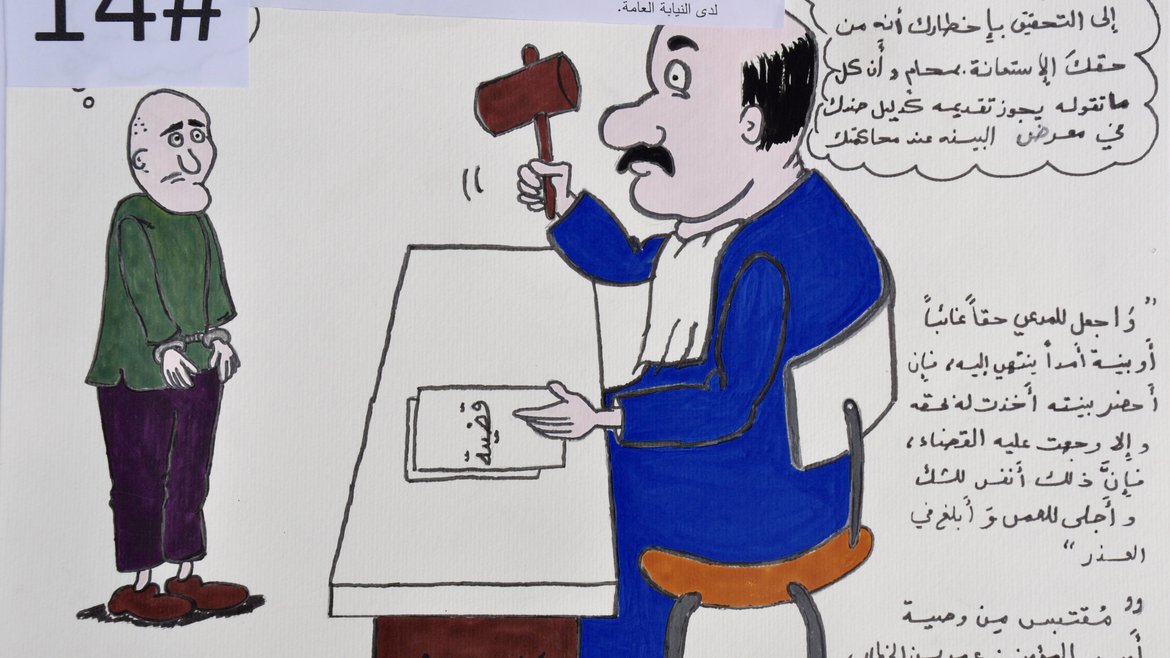
Since ethics can’t be taught in class, but it should be learned by practice, and students have to be really convinced of its importance so they can follow it when they become lawyers, I decided to engage them with something new that makes them excited to attend my legal ethics class. That is why I asked each one of them to draw a picture that describes a positive or a negative aspect of the legal profession. So the idea of the exhibit roots from my desire to attract my students to the study of legal ethics through something creative, refreshing and engaging.
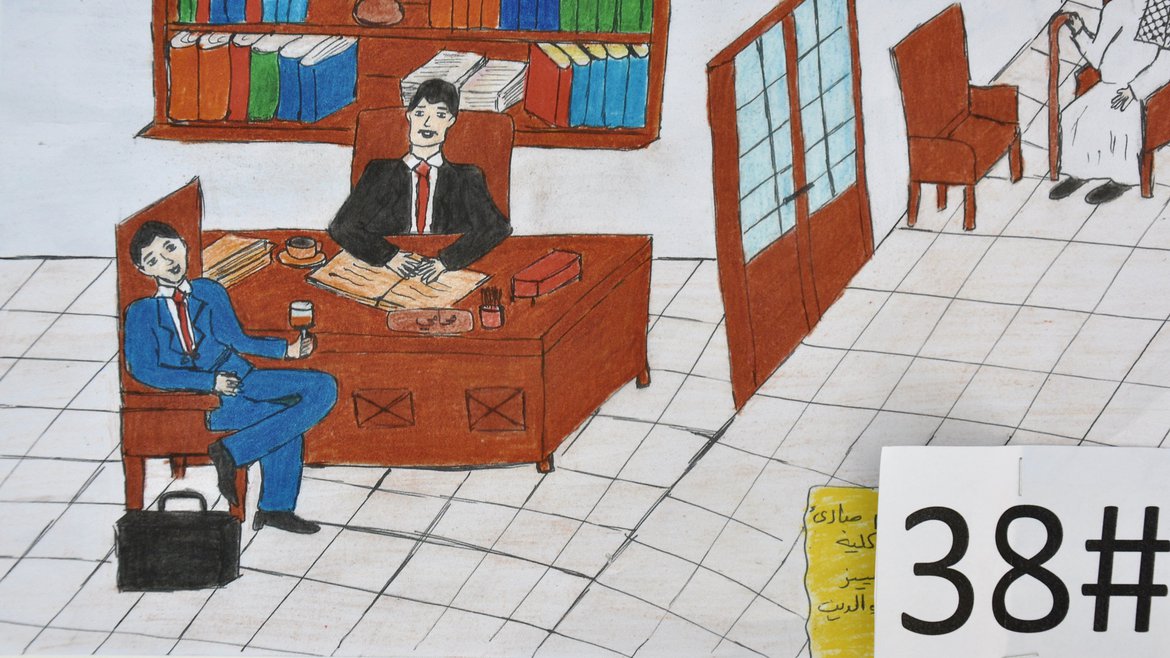
To what degree were you involved in facilitating the event?
The exhibit was a team effort. After announcing that we were going to have a legal ethics exhibition, we formed an organizing committee, consisting of 12 students, out of the total 59 students in my legal ethics class. The work was a lot of fun for me and the members of the committee. I was the head of the committee, but I never felt, even for a minute, that I was working alone. My students were collaborating in everything, work, ideas and other arrangements. I got to know them, their potentials and their amazing skills. Some of them were responsible for getting media attention, others were responsible for crafting and designing logos for the exhibition, and each member of the committee, including me, had a specific job, so I didn’t have to play the role of a teacher. We were working together on something that we are all passionate about. That’s why our exhibition had a great success at An-Najah University.
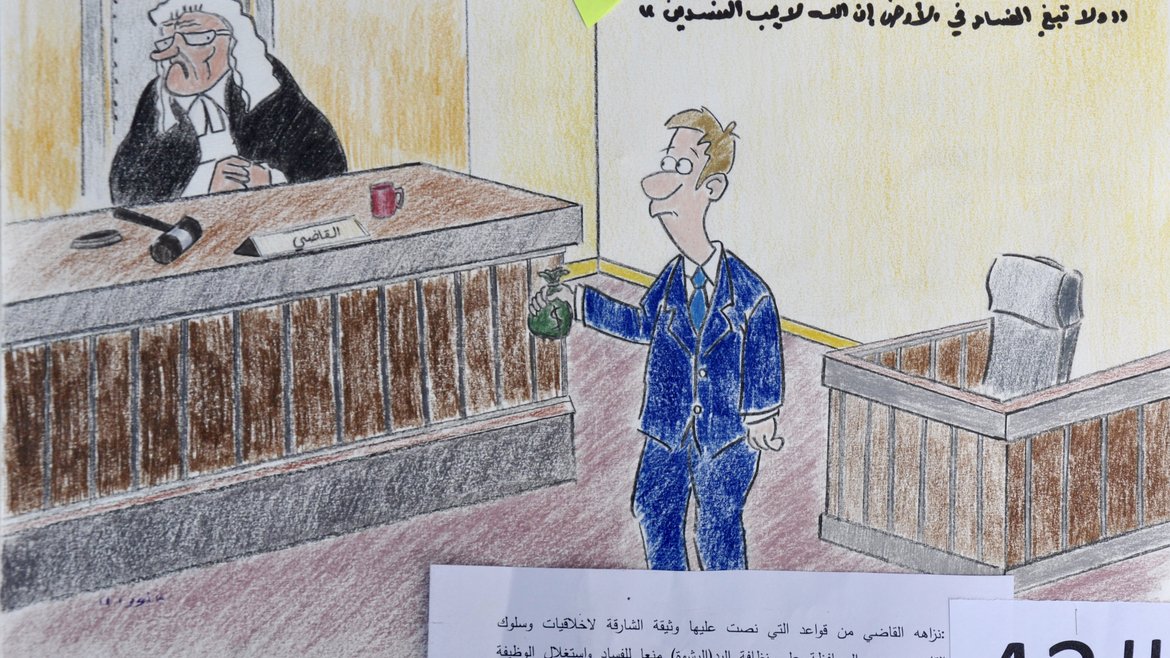
Can you talk about the importance of education in legal ethics and your desire to create a nationwide movement?
I strongly believe in the importance of legal ethics and its role in improving any legal system. When we talk about the legal profession in Palestine, we have a serious problem, as evident by a recent report statistic that showed that 59% do not trust the legal system. This report also showed that people in Palestine do not trust legal professionals, at large. In an attempt to try to restore honor back into our profession, I wanted to start by spreading awareness among new generations and instill in them the value and importance of legal ethics. Following the exhibit, my students and I established an Instagram page (Fosayfsa2) in which we will keep posting drawings, pictures and other kinds of art that aim to present legal ethics and promote it among lawyers in Palestine. We hope to be able to display these legal ethics art pieces in all law schools around Palestine.
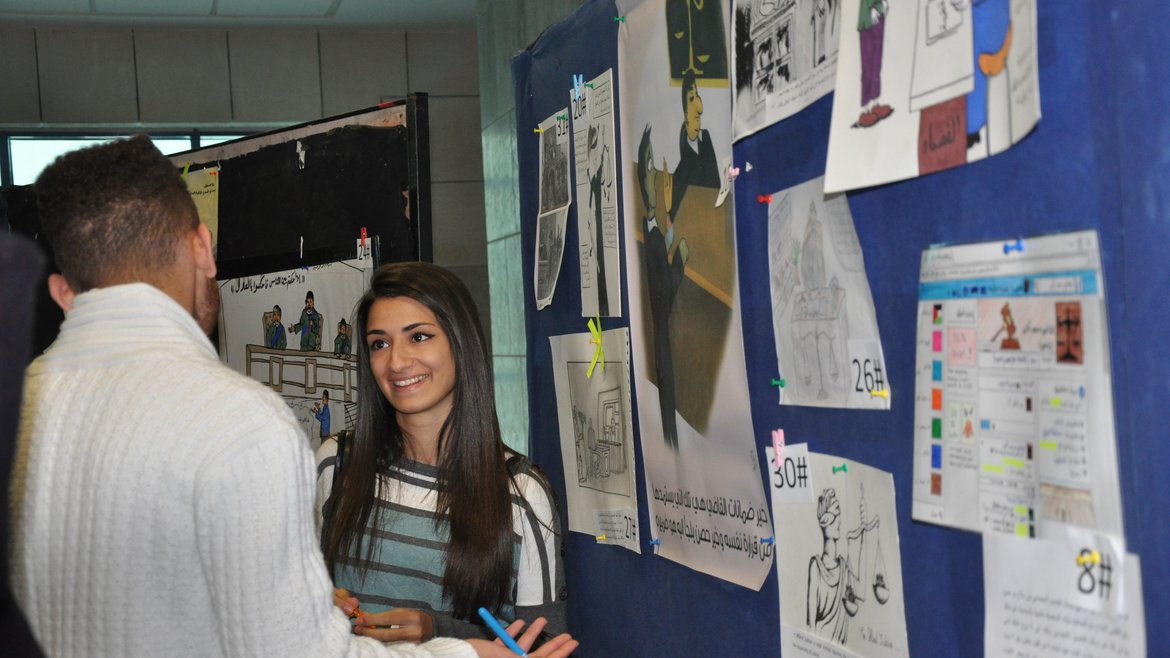
How did students receive this approach (what was their feedback?(
Many of my students told me that the exhibition helped them free their imagination to think and create, which is something of a taboo in some law schools, but luckily, not in our law school at An-Najah. So, I hope this experience will help my students think outside the box and be creative as lawyers, since their job is to find legal solutions to complex issues. To come up with creative solutions, one must not be afraid to think differently.
What do you hope your students will take away from this experience?
I hope they don't forget about the legal ethic issues that each one of them represented in his/her drawing, especially if they face such issues in their professional lives.
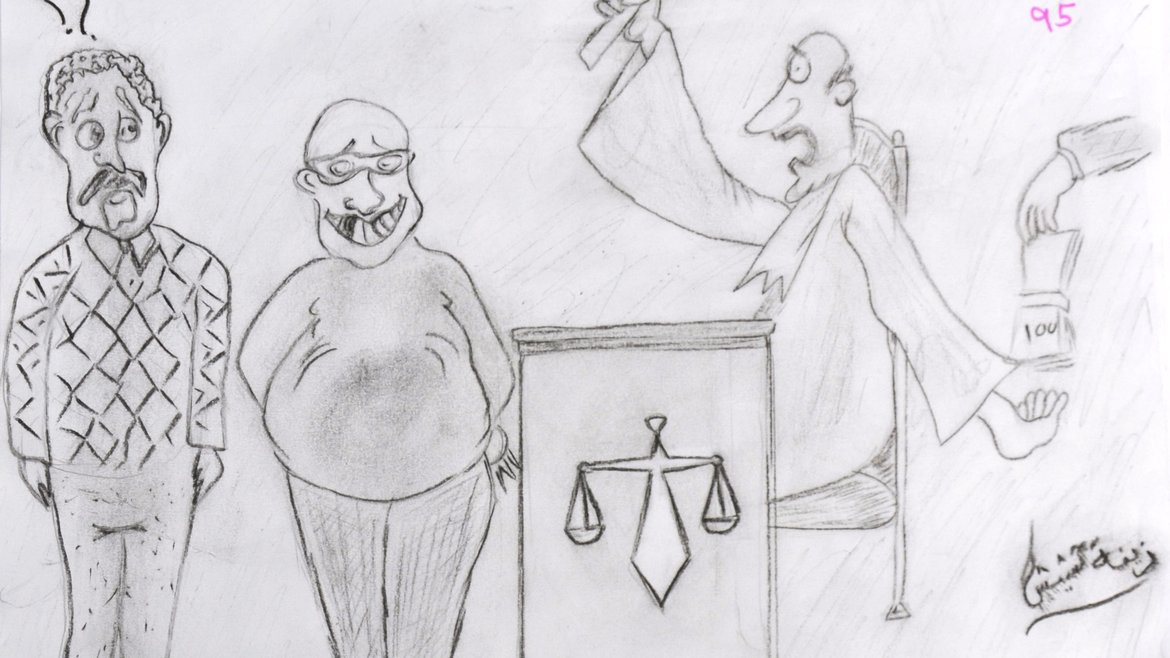
عدد القراءات: 603





